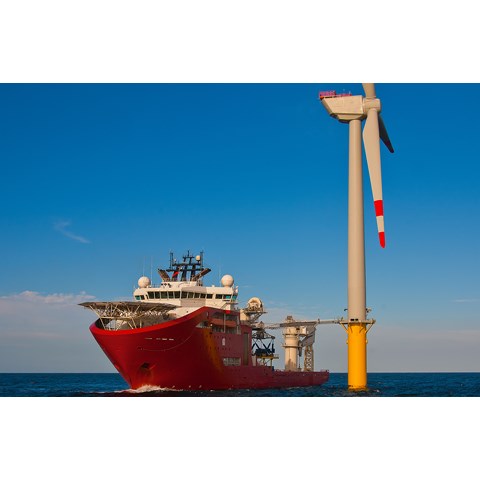At Glamox we have generations of experience within offshore and marine environments, where our team are well versed in all matters of vessel illumination, from new builds and conversions, to refits and upgrades. Here are some of the vessel types which typically service the offshore wind industry:
Wind Turbine Installation Vessels
WTIVs are typically self-propelled jack-up units equipped with large cranes (typically between 300-3,000t swl) for the installation of offshore wind turbines. While a few semi-submersible units are in operation, WTIVs commonly feature 4 support legs that can be raised or lowered, alongside large deck areas for the storage and transport of turbine and foundation components.
Wind Farm Construction Vessels
There are several subcategories in the WFCV such as CLV (Cable Lay Vessel), Dredger Vessel, Heavy Lift, Crane and Transportation Vessel as well as Survey Vessels and different type of Dredger Vessels.
Walk to work Vessels (SOV/CSOV/CSV/ISV…)
W2W vessels are service and support vessels equipped with a motion-compensated “walk-to-work” gangways for access to wind turbines or oil and gas platforms. SOV (Service Operation Vessel), CSOV (Construction Service Operation Vessel), ISV (Installation Support Vessel) and ISV (Construction Support Vessels)s are a subcategory of W2W vessels specially designed for offshore wind. W2W vessels are commonly Multi-Purpose Support Vessels from the oil and gas sector. The conversion of these vessels is non-intensiveand requires only the addition of the gangway and some structural support.
Crew Transfer Vessel (CTV)
CTVs are small, high-speed craft of typically 12 to 24 passengers used to convey technicians from shore to undertake maintenance/construction work on offshore installations. CTVs are typically catamarans with overall lengths of 15-30m, andare commonly used on a daily basisat wind farms closer to shore.
Typical applications
- Crew quarters.
- Indoor social areas.
- Technical areas.
- Deck and work areas.
- Bridge and Control areas.
,(0.5,0.7589499,1,0.4821002)&format=jpg)
